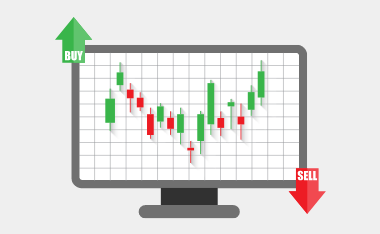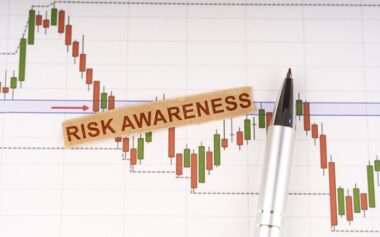Trading Indecisive Forex Markets with a Risk-Managed Methodology

Experts agree that trading the forex market requires a strategic approach, especially when market conditions are indecisive, as they have been since the shift in the global economy arising from Covid-19.
Such markets, characterised by a lack of clear direction, constant retesting of Support and Resistance levels and sporadic unexpected price runs, can be challenging for retail intraday forex traders who rely on short-term price movements.
However, by following a risk managed approach, retail forex traders can navigate these uncertain conditions effectively, protect their capital and make consistent gains.
This article provides practical insights into trading indecisive forex markets while prioritising capital preservation and focusing on high-probability trade entries.
Understanding Indecisive Forex Markets
Indecisive forex markets are marked by choppy price action, where no strong trend emerges. The expected price cycles with higher swing lows and higher swing highs, or lower swing lows and lower swing highs may not be as evident as they are in decisive, strongly driven and aligned markets.
These markets often occur when traders are uncertain about upcoming economic events, geopolitical developments, or central bank policies.
In such an environment, prices may fluctuate within a narrow range and candlesticks may have significant wicks, showing more indecisiveness making it difficult for new traders to predict the next move with confidence.
For inexperienced intraday traders, these conditions can be particularly frustrating, as traditional trend-following strategies may not work in the short term or during the sessions they expect to see such decisive movements.
Instead, a more cautious approach may be more productive—one that focuses on capital preservation and identifying high-probability trade opportunities.
Capital Preservation: The Foundation of Success
In a Risk-Managed Trading Methodology, capital preservation is the cornerstone of successful trading.
In indecisive markets, this principle becomes even more critical, to ensure longevity in the market.
The primary goal in such conditions is not to chase profits aggressively but to protect your trading capital.
By preserving capital, you position yourself to take advantage of more favourable market conditions when they arise.
It is universally recognised that the forex markets will go through such periods of indecision, but it is not the Market “standard”. Once economic policies and results return to a “normal” range, usually the market also returns to its “normal” cycling and responsive conditions.
Identifying Key Levels of Support and Resistance
When trading in an indecisive market, the focus should be on identifying the objectively strongest levels of Support and Resistance—price levels where institutional traders are likely to take decisive action.
These levels often act as psychological barriers, where buying or selling pressure is strong enough to reverse or pause the market’s direction.
- Support Levels: These are price points where the market has historically found buying interest. When the price approaches a support level in an indecisive market, it’s a signal that institutional traders may step in to buy, providing an opportunity for a long trade.
- Resistance Levels: Conversely, resistance levels are price points where selling pressure has historically been strong enough to halt upward movements. When the price nears a resistance level, it may be an opportunity for a short trade.
Identifying these levels requires careful analysis of historical price action, volume data, and an understanding of market sentiment.
A cautious approach encourages traders to be patient and wait for the price to reach these critical levels before considering any trade.
Waiting for High-Probability Trade Entries
In indecisive markets, it’s essential to wait for confirmation that a trade entry is likely to be a high-probability opportunity.
This means observing the price action as it approaches key support or resistance levels and looking for signs that institutional traders are beginning to act.
These signs could include a sudden increase in trading volume, a strong price rejection at the level, the formation of a well-defined candlestick pattern, or confirmation from recognised market analysis indicators.
Rather than jumping into a trade at the first sign of movement, trader may be better to wait for confirmation before committing their capital.
This conservative approach ensures that you are not caught in a false breakout or a short-lived price spike that could lead to a loss.
Securing Profits with a Target 1 Approach
Once you’ve entered a trade at a key level, the next step is to secure your profits with a well-defined exit strategy.
In an indecisive market, it’s often more prudent to aim for smaller, realistic profit targets rather than holding out for larger, less likely gains.
A risk-managed trading methodology recommends targeting a modest profit range, typically between 5 to 8 pips for Intraday Traders, which aligns with the swing points near the strong trade entry levels.
This approach is designed to lock in profits before the market potentially reverses or becomes choppy again.
- Target 1 Profit: After entering a trade, set your first profit target within a close range—usually between 5 to 8 pips. This range is chosen because it represents a realistic movement that the market can achieve even in indecisive conditions, as well as aligning with the general position sizes placed by institutional traders on their higher probability trades. By securing this initial profit, you reduce your risk and can reassess the market for further opportunities.
- Trailing Stops and Secondary Targets: If the market shows continued momentum after hitting your first profit target, you might consider adjusting your stop-loss to break even or trailing it to protect additional gains. However, this should be done cautiously and responsively, as indecisive markets can quickly change direction.
Flexibility and Adaptability
A cautious risk managed approach also emphasises the importance of flexibility and adaptability within the high probability parameters in your trading strategy.
In indecisive markets, conditions can change rapidly, and what seemed like a high-probability trade can quickly turn against you.
By being flexible, willing to adjust your strategy, and locking in your profits, you can avoid significant losses and stay in the game until more favourable conditions emerge.
Aligning Trading Goals with Overall Investment Strategy
Finally, it’s crucial to ensure that your trading goals align with your overall investment strategy.
This means recognising that not every market condition is conducive to even moderately aggressive trading.
During periods of indecision, it might be more appropriate to scale back your trading activity, focusing on preserving capital and waiting for better opportunities.
By maintaining a long-term perspective and sticking to the principles of a risk-managed methodology, you can navigate indecisive markets with greater confidence and success.
Our Last Word on Trading an Indecisive Market
Trading indecisive forex markets requires a disciplined approach that prioritises capital preservation and focuses on high-probability trade entries.
This is not an approach that often comes naturally to new traders, but is absolutely necessary for traders who want to develop a long-term sustainable trading income.
New Traders should prioritise developing patience, discipline and financial responsibility, if they intend to grow a Lifestyle Income From Trading.
By identifying key levels of support and resistance, following your high probability trading method judiciously, waiting for confirmation, minimising losses and securing profits with a target 1 approach, intraday traders are in the best position to effectively navigate these challenging conditions.
A risk-managed methodology provides a solid framework for trading in such environments, helping traders minimise risk and maximise their chances of success.
Remember, in indecisive markets, patience and prudence are your greatest allies.
Disclaimer
The information in this article is intended to be general information in nature and is NOT general financial product advice, nor personal financial product advice.
It does not take into account your objectives, financial situation or needs.
Past performance is not necessarily indicative of future performance.
Any results on our website, including this page, are illustrative of concepts only and should not be considered average results, or promises for actual or future performance.
The Trading Coach International does not operate under an Australian Financial Services Licence (AFSL), as the services we provide do not require one.
Speak with your registered financial advisor before making any financial decisions.

















